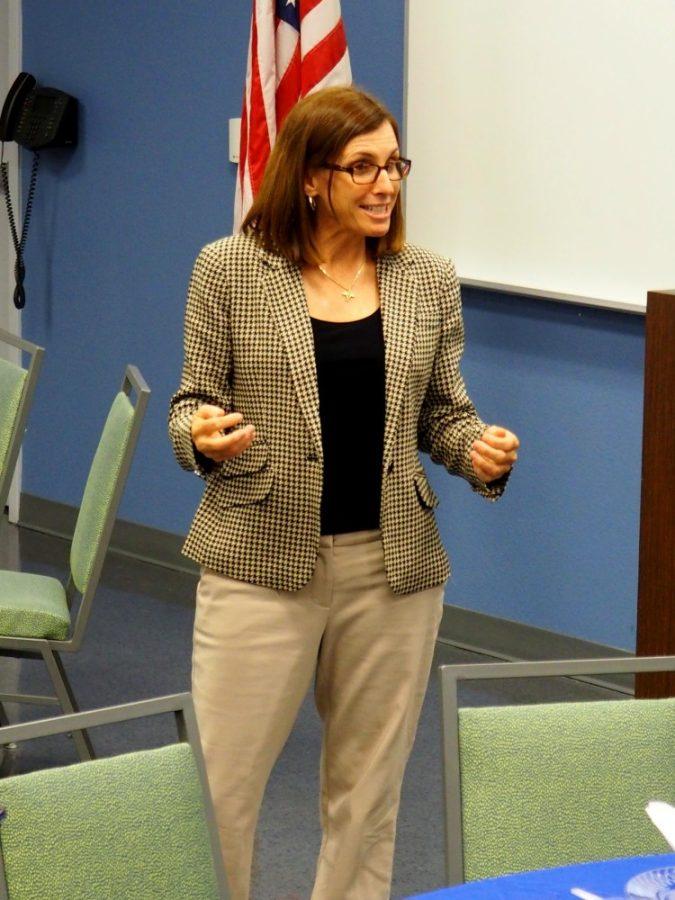The 2018 midterm elections were a rollercoaster. Americans everywhere answered calls from their respective parties and registered to vote in droves, with some Get Out the Vote organizations reporting numbers three times the usual midterm registration rates, according to CNN. But as Americans went to the polls at record high numbers, all eyes were on the Grand Canyon State, tasked in choosing between Martha McSally and Kyrsten Sinema for its first female Senator in state history.
The race was a doozy. Throughout her campaign McSally supported attack ads that accused her opponent of being a traitor and a supporter of child prostitution, and for a while, it seemed like it was working. As late as October, less than a month before the election, The Daily Wire reported that McSally was leading her Democratic opponent by four percent and suggested that Sinema’s position would continue to drop as Arizonans discovered more about the left-wing opinions she held right out of college.
RELATED: OPINION: Showing my appreciation for Martha McSally
Even on election night, McSally took an early lead as the two U.S. Representatives jockeyed for the seat left open by retiring Senator Jeff Flake, with the lead constantly changing as the hours dragged on. But overnight, everything changed.
Early ballots and uncounted votes in blue precincts shifted the balance and put Sinema comfortably ahead of McSally, and by Nov. 12, CNBC, Roll Call and The New York Times were ready to call the election in her favor. Kyrsten Sinema was able to make history in Arizona, making it one of the 30 states that have sent a woman to Washington to represent them in the Senate.
Normally, this is where the story would end: A competitive race rallies independents and those typically tuned out from politics and sends a historic message to the Capitol. But Arizona is not an average story. It isn’t just Jeff Flake who is leaving the Senate. When former Senator John McCain passed away this year, his replacement, Jon Kyl, promised he would not run for re-election, staying in office at least until the end of the year. That means when Kyl steps down, Governor Doug Ducey could replace Kyl with a more ambitious candidate who would stick around. All through the halls of both Phoenix and Washington, one name is raised more than any other: Martha McSally.
That’s right, within weeks of being rejected by voters at the ballot, McSally may make another historic landmark by having Arizona become one of only six states that have been represented by two female Senators. In order to understand this situation, it’s important to look at both the pros and the cons of this deal, and for both there are many. For one, the Senate election in November was by no means a decisive rejection of McSally nor the conservative legacy of John McCain. Even after Democrats promising a “blue wave” that would turn Arizona into a little California, Sinema only led by 1.7 percent when the votes were all tallied, and that can be chalked up to an off year for Republicans.
RELATED: Get to know the Student Union’s rooftop garden
Going even further, Representative Martha McSally has had a pretty remarkable career in both the public and private sectors. She was the first woman to fly combat missions in the U.S. Air Force and championed for the right of female officers to not wear an abaya and headscarves while in Muslim majority countries, pursuing that cause all the way up to the Supreme Court. So McSally has a record of not backing down and not throwing in the towel when the going gets rough, especially considering this hasn’t been her first close election; she eked out a victory against Ron Barber by only 167 votes in 2014 after being beaten by him the election before, according to The Arizona Republic.
But the cons are obvious and compelling: McSally was rejected by the voters. Even if it was an off year, even if there were extenuating circumstances, even if McSally is a good candidate — she still lost. She lost in an election that saw an incredible 65 percent of Arizonans cast a ballot for Senator. To have the Governor look at the results of that definitive election and say that he just does not care what the Arizona electorate thinks is as ridiculous as it is demeaning. When readers responded to AZCentral columnist Laurie Roberts’ opinion that Mcsally should be appointed, she said responses were 10-1 negative and published opinions from voters calling McSally a “shill” or stating that she was a sore loser trying to avoid elections to get into power.
McSally could make a fine Senator, but she has to be elected. If you want to see McSally take a seat in the Senate, don’t lobby Governor Ducey to have her appointed, but support McSally if she decides to run again. Look to her campaigns in 2012 and 2014 for inspiration: After being defeated by Ron Barber in a close election not dissimilar to the one we just saw, she regrouped, rallied her supporters and charged into 2014, victorious.
Governor Ducey, support her, vote for her, tell her to run again, but for God’s sake, don’t appoint her.
Alec Scott is a junior studying political science and German studies who volunteered for the 2014 Ron Barber Congressional Campaign. Follow the Daily Wildcat on Twitter.









